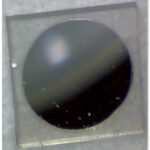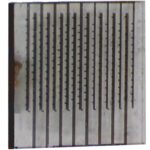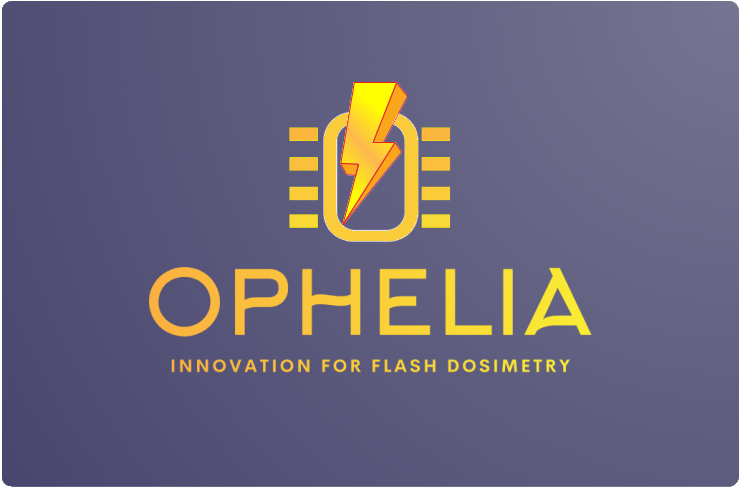The OPHELIA project aims at developing innovative systems, based on diamond detectors coupled to a dedicated front-end/read-out electronics, for the dosimetry of high-energy electron packets with Ultra High Dose per Pulse (UHDPP) used in the emerging electron-FLASH technology for radiotherapy (FT) [1-2].
As it is known, diamond is the elective active material for solid-state dosimeters used in radiotherapy, offering unique properties such as tissue-equivalence, radiation hardness, and ultra-fast response [3], and devices are commercially available [4]. The effectiveness of diamond detectors in monitoring the UHDPP sourced by a FLASH apparatus has been recently demonstrated [5]. However, one of the major drawbacks of detecting systems for FLASH technique is the ultra-high peak photocurrent per pulse generated (up to 100 mA), which conventional electrometers are not able to manage. As a workaround, pulses are broadened by inserting a RC filter between the detector and the electrometer [6], thus making impossible the real-time detection of pulses.
OPHELIA aims at meeting this challenge, by designing and implementing a front-end/read-out electronics, coupled to conventional planar or innovative 3D diamond detectors, able to monitor in real-time UHDPP-electron packets. Therefore, OPHELIA aims at developing a complete detection system tailored to the specific field of FT.
The output of the project is the realization of two Proof-of-Concept (PoC) systems, based on two different types of diamond detectors coupled to a specifically dedicated electronics:

1) A conventional “planar” pixel detector (i.e., with electrodes on the top and bottom surfaces of the active layer). This architecture is a low-risk option, exploiting the know-how already assessed for diamond-based photoconductors [7].
2) Innovative laser-engineered 3D microdosimeters with an active volume < 1 mm³. Specifically, a femtosecond-laser will be used to fabricate arrays of surface and bulk graphite distributed microelectrodes defining the detector geometry, thus optimizing the active volume of the device. This architecture is a medium-risk option: while it exploits the know-how already assessed for fs-laser treatment of diamond [8], the detector response may be affected by defect-centers induced by the laser-treatment [9]. However, defect-related contributions can be mitigated by using a proper detection technique [10].

Both PoCs will be tested in relevant environment with a FLASH apparatus, allowing for the real-time monitoring of the most important quantities for FT: dose-per-pulse, pulse duration, and pulse repetition frequency. This will make OPHELIA a pioneer project for the development of reliable detecting systems for emerging radiotherapy techniques based on the electron-FLASH technology.
Finally, special emphasis will be put to dissemination activities, including a dedicated website, press releases, and radio-TV communications.
References
[1] Science Translational Medicine 6, 245 (2014); https://doi.org/10.1126/scitranslmed.3008973
[2] Radiotherapy and Oncology 139, 18 (2019); https://doi.org/10.1016/j.radonc.2019.06.019
[3] Physica Medica 24, 159 (2008); https://doi.org/10.1016/j.ejmp.2008.03.003
[4] microDiamond, PTW, Freiburg, Germany.
https://www.ptwdosimetry.com/en/products/microdiamond/
[5] Medical Physics 49, 1902 (2022); https://doi.org/10.1002/mp.15473
[6] Physics in Medicine & Biology 67, 075002 (2022); https://doi.org/10.1088/1361-6560/ac594e
[7] Laser Physics 26, 084005 (2016); https://doi.org/10.1088/1054-660X/26/8/084005
[8] IEEE Sensors Journal 19, 11908 (2019); https://doi.org/10.1109/JSEN.2019.2939618
[9] Optical Materials 96, 109214 (2019); https://doi.org/10.1016/j.optmat.2019.109214
[10] IEEE Transactions on Electron Devices 70, 2330-2335 (2023); https://doi.org/10.1109/TED.2023.3250390
